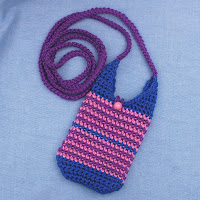
When I brought home my first kindergarten report card, my mother unconsciously stood and read it aloud. Toward the end, she read one category of growth called "large motor development" and another called "fine motor development." They sounded funny so I asked what they meant. I was especially intrigued, even then, that my teacher had been watching my hands, or at least, watching what I did with them. I believe the grade was something as simple as "satisfactory." I was probably too young to absorb any kind of criteria if such had been written on the card. But I am curious about those criteria now.
What do we want children to be capable of doing with their hands? We focus so much on intellect in our schools and, secondarily, large motor development through sports but if we were to focus on developing children's hands, what characteristics would we want to develop?
I have four core criteria that I think are important: strength, control, dexterity and grace. Strength is required for all the grips and grasps we use to hold all kinds of tools. No one wants a hammer to go flying out of the hand while in use. A needle, thin though it is, must be held firmly to sew on a button. Every day we wring out dish cloths and wash cloths; tasks that take strength. When I was young, I slipped off a rock while crossing a creek. My father wrung out my wet socks so well that when it was necessary to head home, my socks were nearly dry on a rock in the sun.
Strength needs to be moderated by control. When we change a light bulb, we must meet the friction of loosening it with strength but also with the control not to break it. When we learn to use a saw, we require the strength to draw it back and forth and apply pressure yet the control to allow the saw to do its work without too much pressure.
Dexterity allows our hands and fingers to adjust to a variety of tools and manipulations. These can be as simple as a good grasp on a mixing spoon or a pocket knife to as complex as the movements required to use knitting needles, a crochet hook or a sewing needle and to adjust the position of the material we are working with.
Strength, control, dexterity and grace are all required to play musical instruments. Grace allows for fluid movements and expressive timing. Grace should also be inherent in the expressions our hands make as we communicate. I would want a child to have a graceful hand for the sake of pure beauty, for the ability to create beauty and to be beautiful merely to look at.
In the photo of Liam you can see the strength to hold his tool and break the crab shell, the control not to knock his plate off the table, and the dexterity to steady the crab with his other hand. Grace will enter this picture most obviously when he brings his food to his mouth and eats in a manner appropriate to the social setting.























